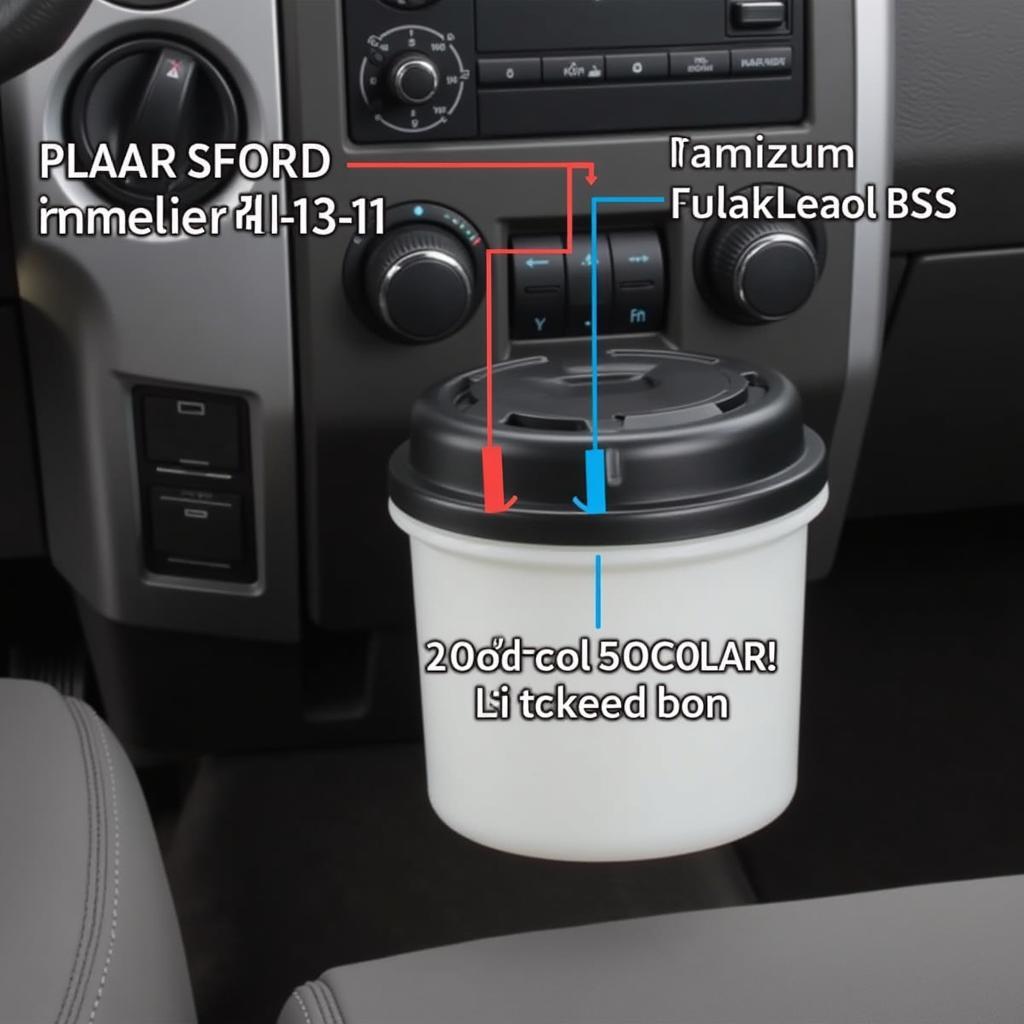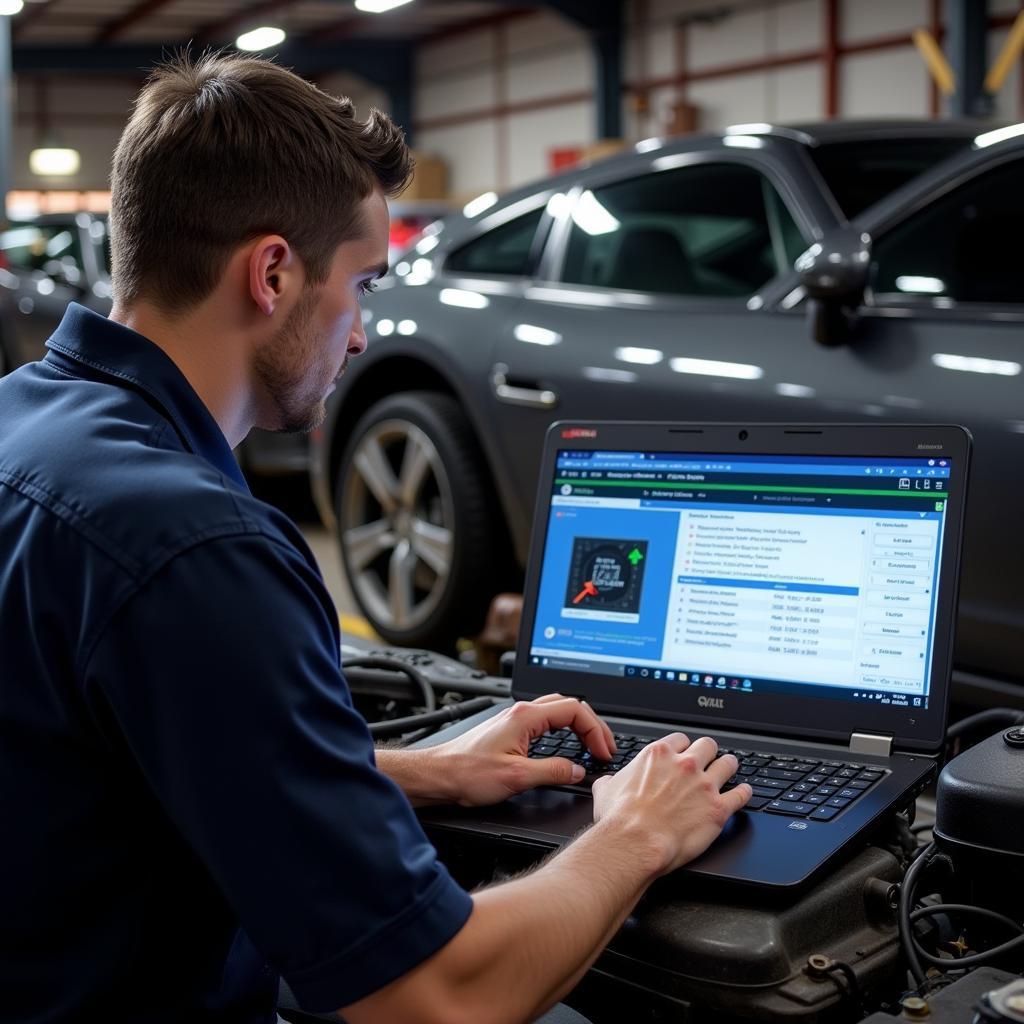A glowing brake warning light on your 2013 Ford F150 dashboard can be a nerve-wracking experience. It signals a potential issue with your braking system, requiring immediate attention to ensure your safety and that of others on the road. While several factors can trigger this warning light, understanding the common causes can help you troubleshoot the problem or effectively communicate with a mechanic for a swift resolution.
Common Causes of the Brake Warning Light in a 2013 Ford F150
Several culprits could be behind your 2013 Ford F150’s illuminated brake warning light. Let’s delve into some of the most common causes:
1. Low Brake Fluid Level
The most common culprit behind a brake warning light is a low brake fluid level. Brake fluid is the lifeblood of your braking system, transmitting force from the brake pedal to the wheels. A leak in the system can lead to a drop in brake fluid, triggering the warning light.
What to do:
- Check the brake fluid level. Locate the brake fluid reservoir under the hood (refer to your owner’s manual for the exact location).
- Inspect for leaks. If the fluid level is low, visually inspect the reservoir, brake lines, and around the wheels for any signs of leaks.
- Add brake fluid (if necessary) and consult a mechanic. If you notice a leak, it’s crucial to have it addressed by a qualified mechanic.
 Brake Fluid Reservoir
Brake Fluid Reservoir
2. Worn Brake Pads
Your Ford F150’s braking system relies on friction generated between the brake pads and rotors to slow down or stop the vehicle. Over time, brake pads naturally wear down. When they reach a certain thickness, a sensor embedded within the pad triggers the brake warning light, indicating it’s time for a replacement.
What to do:
- Inspect brake pads. Have a mechanic inspect the thickness of your brake pads.
- Replace brake pads (if necessary). If the pads are worn beyond the recommended limit, replace them with new ones.
3. Faulty Brake Light Switch
The brake light switch, located behind the brake pedal, plays a crucial role in activating your brake lights when you press the pedal. If this switch malfunctions, it can disrupt the brake light circuit and illuminate the brake warning light.
What to do:
- Test brake lights. Have someone observe the brake lights while you press the pedal. If the lights don’t illuminate, the switch could be faulty.
- Consult a mechanic. Diagnosing and replacing a brake light switch often require specialized tools and expertise, so it’s best to consult a mechanic.
4. ABS Issue
Your 2013 Ford F150 is equipped with an Anti-lock Braking System (ABS), designed to prevent wheel lockup during hard braking, enhancing vehicle control. A malfunctioning ABS system, often due to a faulty sensor or module, can trigger the brake warning light.
What to do:
- Consult a mechanic. Diagnosing ABS issues requires specialized equipment. A mechanic can retrieve diagnostic trouble codes and pinpoint the specific problem.
Remote Diagnostics and Programming: A Modern Solution
In today’s technologically advanced world, remote diagnostics and programming offer a convenient and efficient way to diagnose and resolve issues with your 2013 Ford F150, including those related to the brake warning light.
How it works:
- Connect to a remote technician. Using specialized software and equipment, a remote technician can access your vehicle’s onboard computer system wirelessly.
- Diagnose the issue. The technician can retrieve diagnostic trouble codes and analyze real-time data from your vehicle’s sensors to pinpoint the root cause of the problem.
- Perform software updates and programming. In some cases, the issue can be resolved remotely through software updates or programming.
Benefits of remote diagnostics and programming:
- Convenience: No need to take your vehicle to a mechanic, saving you time and effort.
- Faster diagnosis: Remote technicians can quickly access your vehicle’s systems, leading to a faster diagnosis compared to traditional methods.
- Cost-effective: Remote diagnostics can often be more cost-effective than an in-person visit to a mechanic, especially for minor issues.
 Remote Diagnostics
Remote Diagnostics
Conclusion
The brake warning light on your 2013 Ford F150 should never be ignored. Addressing the underlying cause promptly ensures your safety on the road. While this article provides insights into common causes, remember that a professional diagnosis from a qualified mechanic is crucial for accurate identification and repair. Modern solutions like remote diagnostics and programming offer convenient and efficient ways to address these issues, keeping your Ford F150 running smoothly and safely.


